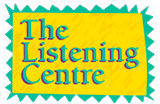Kinesthetic Intelligence and the Ear
You walk up a steep hill and your whole body, like some ingenious biomechanical engineer, places itself at the precise angle to the hill, required by gravity to keep you from falling backwards. You reach to one side for the book that is just beyond your grasp, and spontaneously your opposite leg lifts to keep you in balance. You find yourself completing a walk through the woods after sunset, and some inner body wisdom takes over the coordination of your movements, as you blindly navigate the uneven terrain.
Our kinesthetic intelligence is this organismic “knowing”, related to the sensations of movement in the muscles, joints, and tendons of the body. At the simplest level, it enables us to deal with gravity in our four-dimensional reality of space and time.
Its vital and fascinating connection with the ear is something we often forget or are not aware of. There, in the inner ear, we fi nd three semicircular canals, each related to one dimension in space, and the cochlea related to the sense of time through the function of sound perception. The ear, dynamically connected to the brain and nervous system, informs us of our “location” in space and time, and this information is relayed to and acted upon by the muscular system. Describing these organic systems and their dynamic integration in simplest terms is admittedly like admiring a vast forest by looking at a few trees.
At more complex levels, this kinesthetic intelligence, with its ear connection in particular, forms the foundation of our “body image”, our perception of “self” as separate or distinct form our environment while being part of it. This environment includes other “selves”. The ensuing awareness of an “I” distinct from “you” leads to interaction, learning, communication, language, and progressively more complex understandings and expressions of this awareness of relationships, which some call consciousness.
It’s easy to take for granted our kinesthetic intelligence, and therefore leave it to develop helter-skelter or actually deteriorate. After all, if we have developed in a fairly healthy way, it serves us quite well “on automatic pilot”. That is, until something goes wrong. George, an athlete usually well attuned to his physical environment, woke up one day in an unrecognizable world. He could not “make sense” of his senses, could not sit or stand or find that familiar relationship between himself and the usually sensible three-dimensional space around him. George had an inner ear infection, and this dramatically disturbed the functioning of his kinesthetic intelligence.
In contrast, Johnny, whose coordination, balance and sense of self was chronically “out of tune” with the world around him because of developmental delay, suddenly one day got on the training bike and, after years of failure, was able to pedal for the first time. Over the previous two months he had received Listening Training to the tune of 60 hours of modified Mozart music. This energizing auditory stimulation, as it affected especially the vestibular system with the ear/brain/muscle neurological loop, had “boosted” his kinesthetic intelligence to a new level.
Additional examples would further illustrate that kinesthetic intelligence can be developed, inhibited, suffer temporary or permanent damage, or be delayed. It can also be enhanced to a level that most of us scarcely can imagine.
With its intimate connection to the ear, it is not surprising that music of certain kinds - listened to, played instrumentally, chanted, sung, and danced - is one of the major (and to many most enjoyable) ways to heal, develop and enhance this multi-form of intelligence.
Published in The Little Acorn, Toronto, 1998,
© Devika Eifert, 1998.
 Skip Navigation
Skip Navigation
